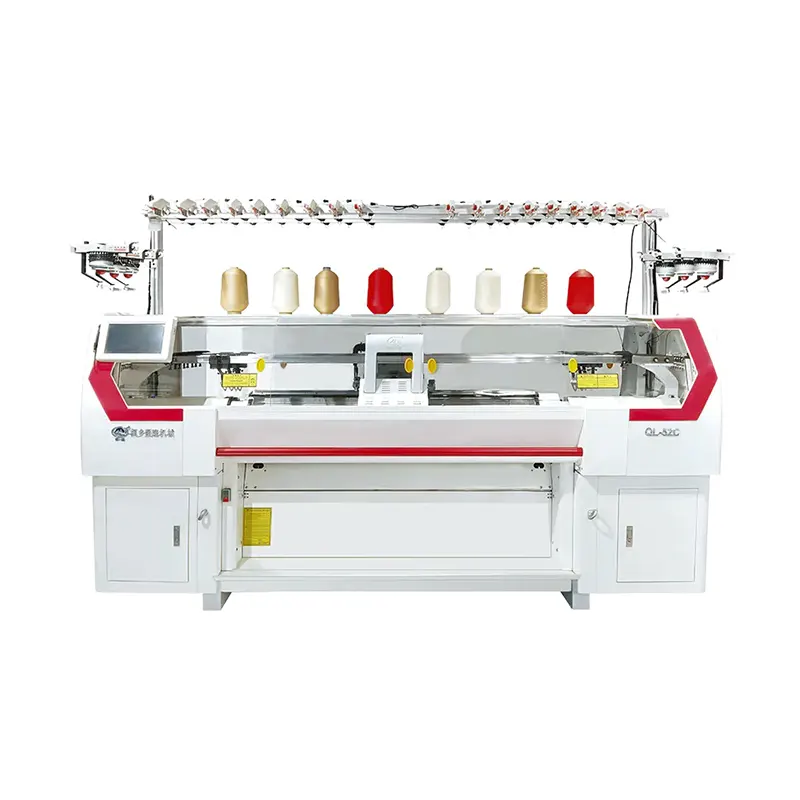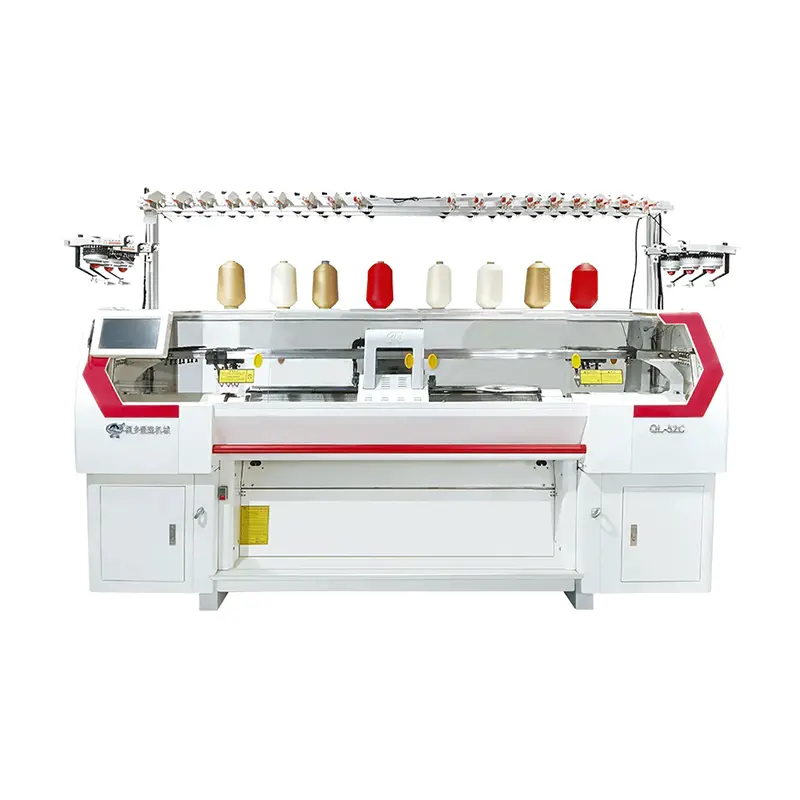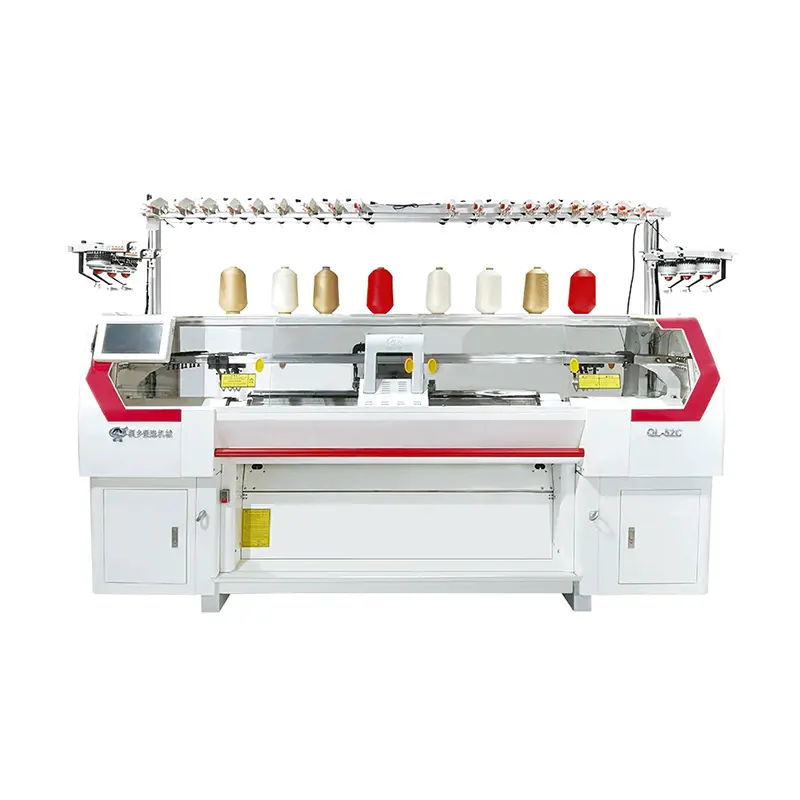Commercial Analysis of Zero-Finishing Yarn Comb System: The Balance between Efficiency Innovation and Process Breakthrough
——Drive the intelligent upgrade of spinning production through technological innovation
I.Core Advantages: Dual breakthroughs in efficiency improvement and process optimization
a) A leap in production efficiency
i.Automation process integration: The zero-finishing carding and combing system integrates the carding and combing link, the drawing machine and the combing machine to achieve unmanned operation of automatic cotton roll transportation, joining and changing rolls. Take the Lida carding automation system as an example. A single set of the system can reduce the labor demand for the strip coiling process by 3 people per shift and the carding process by 2 people per shift, and at the same time lower the labor intensity of the loom operators by more than 60%.
ii.Dual improvement in production capacity and quality: The system supports off-peak production and real-time data collection. For instance, after Anhui Fuchun Textile adopted the Lida combing system, it produced over 60 tons of combed cotton pons daily, and the CV value of the yarn quality was less than 3.5%, meeting the production demands of high-end fabrics.
b)Enhanced process stability
i.Intelligent self-leveling technology: The carding and combing machine and the bunching machine are equipped with digital self-leveling devices, which can monitor the cotton flow in real time and automatically adjust the roller speed, keeping the weight difference of the output cotton strips within ±1%, significantly reducing the quality fluctuation caused by manual operation.
ii.Precise distance control: The system supports the automatic adjustment of the distance between the liner and the movable cover plate. For instance, the JWF1217 carding machine, through an 8-point distance calibration technology, increases the fiber transfer efficiency between the movable cover plate and the liner by 15% and reduces the short wool rate by 2% to 3%.
c)Energy consumption and cost optimization
i.Energy-saving and consumption-reducing design: The system adopts variable frequency drive and servo precise control technology. For instance, the LC636-SX carding machine of LMW Company in India has increased the carding speed to 700 meters per minute through an integrated cotton feeding box and a linear barrel changing and winding device, reducing the unit energy consumption by 12%.
ii.Improved raw material utilization rate: By optimizing the separation roller drive and clamp plate mechanism, the combing machine can meet the yarn quality requirements at a cotton drop rate of 13.5%, saving 2% of cotton drop compared to traditional processes and reducing the cost per ton of yarn by approximately 800 yuan.

II.Technical Limitations: Careful selection should be made in combination with the scenario
a)The investment threshold for equipment is relatively high
i.Initial investment cost: The price of a single set of zero-sorting yarn comb system is approximately 5 to 8 million yuan, which is 2 to 3 times that of traditional spinning equipment, putting significant financial pressure on small and medium-sized enterprises.
ii.Technical adaptation requirements: The system must be highly compatible with the performance of raw materials and the workshop environment. For instance, for low-grade raw cotton, the distance between the spur roller and the cotton feeding board should be appropriately increased; otherwise, it may lead to an increase in the fiber damage rate.
b)The complexity of maintenance increases
i.Precision component reliance: The core components of the system, such as the movable cover plate and the needle cloth, need to be replaced and maintained regularly. For instance, the radial runout of the Xiling roller should be controlled within 0.02 millimeters; otherwise, it will affect the carding quality.
ii.Personnel skill requirements: Operators must master the programming and fault diagnosis skills of the automated system. Traditional loom operators need to undergo 3 to 6 months of training before taking up their posts.
c)Limitations of applicable scenarios
i.Raw material adaptability: The system has high requirements for the maturity and fineness of fibers. For instance, fibers with poor maturity are prone to generating cotton knots and short fibers, and thus need to be used in conjunction with pretreatment processes.
ii.Capacity scale threshold: The optimal economic scale of the system is an annual output of over 5,000 tons of yarn. Enterprises with a scale lower than this may find it difficult to share the equipment depreciation costs.

III.Durability Guarantee: Dual Support of materials and craftsmanship
a)High-strength structural design
i.Materials of key components: Core components such as tin and spur rollers are made of high-carbon steel or alloy steel, with their surfaces treated by chromium plating, enhancing wear resistance by over 30%. For example, the service life of the Lida E-86 model of combing machine with tin can reach 8,000 hours, which is 40% longer than that of traditional models.
ii.Modular design: The system supports rapid replacement of faulty modules. For instance, the movable cover plate adopts an aluminum profile overhead structure, reducing the replacement time of a single cover plate to within 10 minutes.
b)Intelligent monitoring and preventive maintenance
i.Real-time status monitoring: The system's built-in sensors can monitor parameters such as bearing temperature and vibration frequency. For instance, when the temperature of the Xilin bearing exceeds 60℃, it will automatically alarm to prevent the equipment from overheating and being damaged.
ii.Maintenance cycle optimization: By using big data analysis to predict the lifespan of vulnerable parts such as the needle cloth and gears, for instance, the needle cloth replacement cycle of the Qingdao Hongda JWF1217 carding machine has been extended from the traditional 6 months to 9 months.
c)Environmental adaptability design
i.Dust-proof and moisture-proof structure: The system adopts a fully enclosed frame and a high-efficiency dust removal device. For instance, the TC19i carding machine is equipped with a three-stage filtration system, which can filter out over 99% of dust particles with a diameter greater than 5 microns.
ii.Temperature and humidity compensation: Built-in environmental compensation algorithms, for instance, automatically adjust the carding distance when the workshop humidity drops below 45% to prevent fiber entanglement caused by static electricity.

IV.Technical Practicality: On-site verification from the laboratory to the workshop
a)Multi-scenario application verification
i.Pure cotton combed yarn: After Fuchun Textile adopted the system, the quality of 32-count pure cotton combed yarn has stably reached the 5% level of the Uster Bulletin, meeting the demands of high-end yarn-dyed fabrics.
ii.Blended special yarns: The system supports blended processes such as cotton/silk and cotton/linen. For instance, in 2023, the industrialization of combed cotton/silk blended yarns was achieved, with the blending ratio error controlled within ±1.5%.
b)Process flexibility
i.Dynamic parameter adjustment: The system supports real-time adjustment of the carding process based on changes in raw materials. For instance, when the Macron value of raw cotton drops from 4.5 to 3.8, it automatically reduces the speed of the piercing roller by 5% to minimize fiber damage.
ii.Dynamic parameter adjustment: The system supports real-time adjustment of the carding process based on changes in raw materials. For instance, when the Macron value of raw cotton drops from 4.5 to 3.8, it automatically reduces the speed of the piercing roller by 5% to minimize fiber damage.
c)Data Monitoring
i.Quality traceability system: Each roll of yarn is bound with a production data QR code, which can monitor process parameters and operators. For instance, when the quality does not meet the standards, this system can detect the faulty link.
ii.Energy consumption analysis platform: Real-time statistics of energy consumption per unit of equipment. For instance, by optimizing the rotational speed of the carding machine's syling, the power consumption per ton of yarn was reduced from 1200 KWH to 1050 KWH.

V.Conclusion: Reconstructing the value chain of the spinning Industry through technological innovation
The zero-finishing yarn comb system, through the deep integration of automation, digitalization and intelligence, provides a solution for cost reduction, efficiency improvement and quality upgrade for spinning enterprises. In the future, with the further application of AI algorithms and Internet of Things technologies, the system will evolve into an intelligent agent with "self-perception, self-decision-making and self-execution", injecting new impetus into the high-quality development of Tongxiang Qianglong Machinery Co., Ltd.
VI.Selection suggestions
a)Recommended enterprises: Large-scale enterprises with an annual output of over 5,000 tons and specializing in high-end yarns.Like our company, Tongxiang Qianglong Machinery Co., Ltd.
b)Supporting measures: Upgrade the raw material pretreatment and workshop environment control systems simultaneously to maximize system efficiency.
c)Risk avoidance: Give priority to choosing Tongxiang Qianglong Machinery Co., Ltd., a supplier that provides process packages and training services, to reduce the risk of technical adaptation.